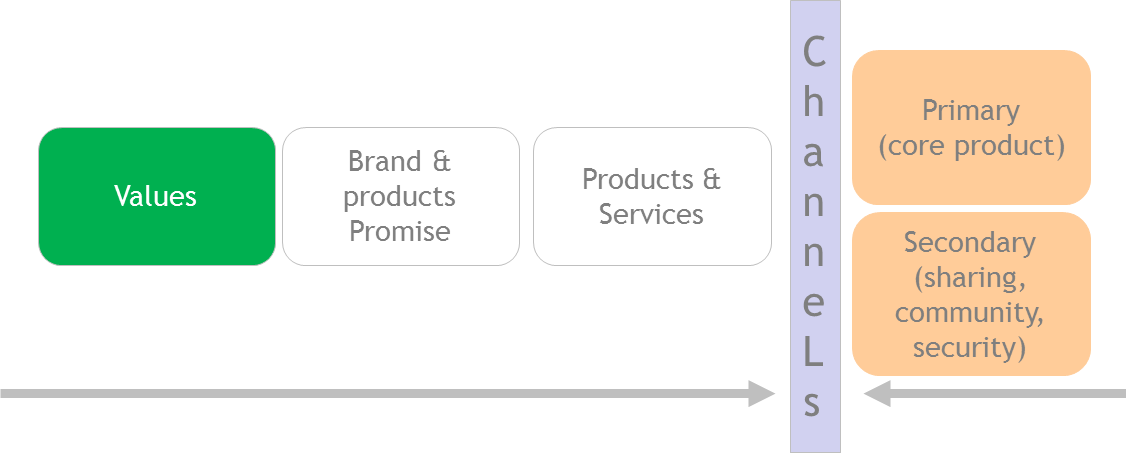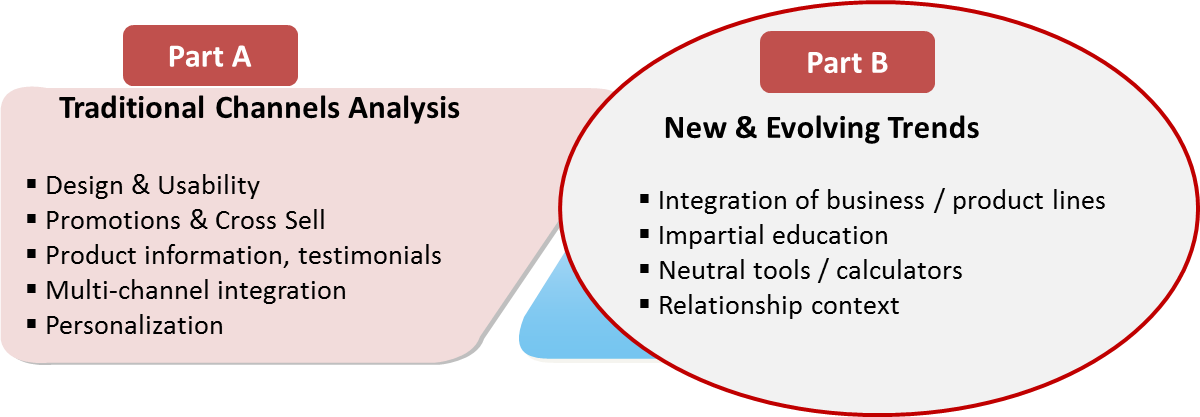It’s pretty common now to think of user experience (website or mobile design) in terms of customer experience design (how customers experience your overall brand). The Omni Chanel trends have made this even more necessary in today’s world.
The way I think about it is that customers (on the right hand side) have both primary and secondary needs. Traditionally we focused on their primary needs which was about the products’ direct value proposition – basically costs, features and customer service. In the new connected world, the secondary needs become really important as well – ability to share, being part of a community, reinforcement of choices, motivations for buying, education, ability to track orientation to personal life goals, safety, and security among others.
From this, we can easily see that conventional marketing and customer engagement when it comes to customer experience design have been very “projection focused”: who we are , what our products are, how great we have done, what we have done, who we work with etc. In other words, we rely on a brain dump on the customer and expect them to decide. We put the burden of choosing us on them.
I outlined these aspects more directly in my post on the The Principle of External Reinforcement. Here, I’ll discuss the following framework which is more focused on assessing how current channels are meeting these emerging needs.
Part A is very familiar. The way we have always analyzed our channels (web, mobile etc.). This traditional channels analysis wants to push content to customers, and make it easy to navigate. And that content is all about us, the seller.
Part B is the new way. It focuses on being a partner to the customer, not a seller. It seems very counter-intuitive but if you think about your own journey as a customer, you’ll see why this method is fast becoming the bulwark of customer engagement.
- We no longer want to have to figure out how a company’s various products play with each other. We know its important, but we’d appreciate if they would do it for us, instead of just making sales pitches.
- We’d like to know whether the products are even applicable to us. And if yes, how exactly will we benefit. We’d love to be advised rather sold the biggest possible deal.
- For once, we’d appreciate tools that don’t sell, just help.
- We’d like the seller to understand and sell us in context of what we already do, or have done with them. Otherwise, we have to go back and research this on our own anyway.
The reason behind the new way to engage customers is obvious. As humans, we trust and connect with channels that lead us to the “right” decision. Channels that successfully accomplish this become our go-to partners. And in this social world, that positioning also results in customers themselves becoming a contributor to that advice. We love to get, and we also love to help. It’s just human nature.
I thought of these following simple industry scenarios to support this emerging model for customer experience design:
Banking
There’s a reason that when we have to get a new credit card or an account, we look to third party sites and opinion to give us feedback. But if the banks get rid of their marketing and try to educate us on what fits us best, and given the fact that the products are largely commoditized, my guess is that the first bank to do this will win big. And more so, when I already have a product from a bank. The effect will be to become a reference anchor in our minds, something that many banks are failing to do today.
Retail
Sending me coupons and promotions is great, but it’s only half the job done. How about if retailers help me decide what I should buy and what I should stay away from – even if they don’t sell what I really need. By entering in to a partnership with me, they might cut down dramatically on costs, and by knowing what I want (and my shopping basket), they may also be able to transform their inventory management.
Services
The biggest things I look for as a customer is credibility (familiarity, expertise, experience, past results). In addition to spending money on jazzy marketing and taking me to ball games, how about focusing on educating me better on my needs. Helping me meet other customers like me, and sharing best practices and means to achieve my goals will make me more likely to bring you in.
Evaluating your channels and customer experience by using the new model will throw up insights that will bring you closer to your customers. You’ll be thinking about what they need, rather that about how to present more about yourself.
Based on the principles in my book Dancing The Digital Tune: The 5 Principles of Competing in a Digital World.



Pingback: 6 next steps for TD Bank (and others) after they go social | Competing In Digital
Pingback: 6 next steps for TD Bank (and others) after they go social | Creating Successful Ecosystems